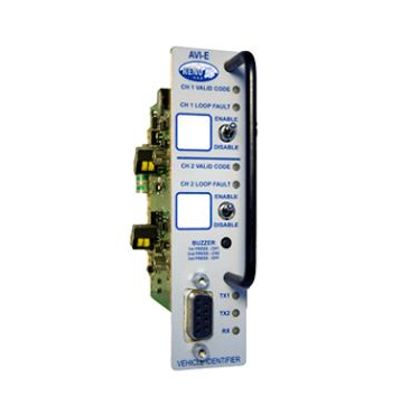

- Home
- Companies
- Eberle Design, Inc. (EDI)
- Products
- EDI - Model AVI-E - Transit Signal ...

EDI - Model AVI-E - Transit Signal Priority Receiver & Transmitter System
The AVI-E Transit Signal Priority Receiver & Transmitter System by Reno facilitates seamless vehicular access control across various applications, including transit signal priority systems, automatic gates, and parking systems. This system employs a transmitter, which is tethered to the vehicle's electrical components and emits a consistent coded signal. This signal, operating at a low frequency, is coupled inductively through in-ground loop antennas, ensuring precision in vehicle detection. The AVI-E receiver, capable of managing two channels, identifies valid codes from up to 19,683 specific transmitters, confirming either vehicular access or priority. It integrates a robust loop monitoring capability, ensuring the reliability and continuity of its antenna loops. Additionally, the receiver is equipped with a DB-9 RS-232 interface, enhancing its programmability and resource-sharing with external control systems or PCs. The system must be aligned over the receiver's loop antennas at a height not exceeding four feet to ensure accurate identification.
The Reno AVI (Automatic Vehicle Identification) system provides hands-free access to transit signal priority systems, automatic gates, automatic doors, and parking systems. The transmitter is attached to the underside of the vehicle and connected to the vehicle’s electrical system. When power is applied, the transmitter emits a continuous coded signal. The transmitter is inductively coupled through standard roadway loops to a Reno AVI receiver (AVI-E). When the receiver recognizes a valid code, the receiver provides a signal permitting vehicle priority or access. The AVI transmitter provides a low frequency coded signal, which is inductively coupled through an in-ground loop, ensuring reliable vehicle detection.
The Model AVI-E Automatic Vehicle Identification Receiver is a two channel, card rack mount unit and provides an output signal once the vehicle(s) has (have) been detected. The AVI-E uses two antenna loop coils (one per channel) installed in the road surface to receive the transmitter’s code. The transmitter must pass directly over the area defined by the receiver’s antenna loop coil(s) at a height not exceeding four (4) feet. Each receiver channel is programmed to identify all of 19,683 specific transmitter codes. The AVI-E also incorporates loop monitoring capability that continually checks the integrity of the antenna loop(s).
The AVI-E receiver has a front panel mounted DB-9 RS-232 connector that allows data to be communicated to and from external equipment (e.g. a control system or PC). The RS-232 connector can be used to program each channel of the AVI-E receiver to accept or ignore coded input signals.
